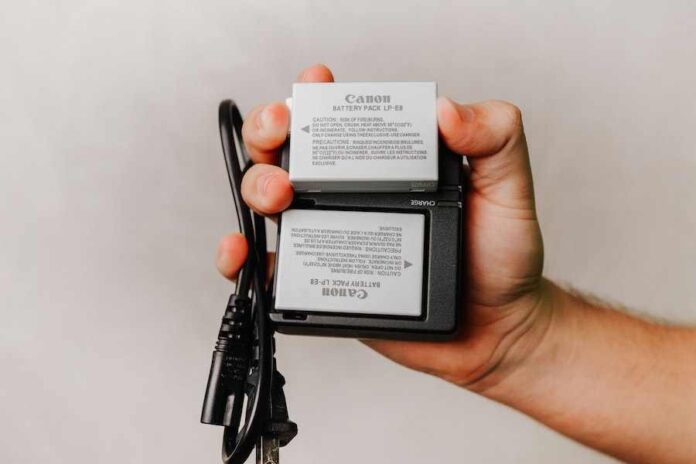Do you know how to read a battery charger? If not, don’t worry – you’re not alone. A lot of people don’t know how to interpret the symbols and information on their battery chargers. In this blog post, we will teach you how to do just that! We’ll explain what each symbol means and what you should look for when charging your batteries.
How To Read A Battery Charger?
- Read the Instructions: The first and perhaps most important step is to always read the instructions that come with your battery charger. These will provide you with specific information about how to use your device safely and effectively.
- Check the Voltage Rating: All batteries have a specific voltage rating, typically written as “V” on the charger. Make sure that your battery is compatible with the voltage of your device by checking this information before connecting it to the charger.
- Read the Amperage Rating: The amperage rating, or “A” on the charger, tells you how much current should be flowing through your battery as it charges. This will also be listed in the instructions. Make sure that your battery is compatible with the amperage rating of your charger.
- Look for a Protection Circuit: A protection circuit helps to prevent overcharging or other damage to the battery by monitoring its temperature and voltage. If the device is equipped with this feature, it should be clearly marked on the charger.
- Check the Connector Type: There are several different types of connectors used to connect the battery to the charger, so make sure that you have the right one for your device. Again, this information should be listed in the instructions.
- Look For an Indicator Light: Most chargers will include an indicator light that tells you when the battery is fully charged. This feature will help to ensure that you don’t overcharge your device, which could damage it.
- Consider A Smart Charger: For added safety and convenience, many chargers now come with built-in features such as temperature sensors and automatic shut-off.
What Do The Symbols Mean On A Battery Charger?
- The symbols on a battery charger indicate the voltage, current, and type of batteries that it is designed to charge. The voltage is usually indicated by a ‘V’ followed by a number (e.g. 12V). This indicates the maximum output that the charger can provide to your batteries. The current is usually indicated by an ‘A’ followed by a number (e.g. 2A).
- This indicates the amount of current that the charger can deliver to your batteries. Finally, the type of battery it is designed for is usually indicated by an abbreviation such as ‘NiMH’ for Nickel-Metal Hydride or ‘Li-ion’ for Lithium-Ion. What should you look for when charging your batteries? When charging your batteries, it’s important to ensure that the charger is compatible with the type of battery you are using. Also, make sure to check the voltage and current settings to ensure they match those indicated on the charger. Before
- plugging in the charger, make sure to double-check that all connections are secure and that the plug is correctly inserted into the power outlet. Finally, pay close attention to the charging times indicated by the charger as this will help ensure your battery is properly charged without any damage.
- what to look for when charging your batteries, you can safely charge any type of battery with confidence! Remember, it is important to read the instructions that come with your charger before using it. This will ensure maximum safety and efficiency in the charging process. Be sure to unplug your charger when not in use, as leaving it plugged in can overheat and damage the charger or your batteries.
How To Plug In A Battery Charger?
- Read the instructions that come with your battery charger and make sure it is compatible with your batteries.
- Plug in the power cord and check that the green light indicator on the charger is illuminated, indicating that it is correctly connected and ready to use.
- Check that all connection points are secure before inserting the battery.
- Connect the battery to the charger and make sure that it is securely fastened and making contact with all connection points on the charger.
- Adjust the charging time as appropriate for your battery type; refer to your product manual or manufacturer’s website for details on recommended charging times for different batteries.
- Monitor the progress of your charge by checking the indicator lights on the charger. Some chargers will have a green light that indicates when the battery is fully charged, while others may have an LED display to show charge levels.
- Once your battery is fully charged, disconnect it from the charger and store it in a cool, dry place. Do not leave your battery connected to the charger for too long, as this can cause damage. Now that you know how to read a battery charger and safely charge your batteries, you’re ready to enjoy the power of your devices! Remember to always check the instructions that come with your charger and follow recommended charging times for optimal performance.
What Type Of Batteries Can You Charge With A Battery Charger?
- Most battery chargers are designed to charge lead-acid, nickel-cadmium (NiCd), and nickel-metal hydride (NiMH) batteries. However, some battery chargers are also capable of charging lithium-ion (Li-ion) or LiPo batteries.
- It’s important to check the compatibility of the battery charger with the batteries you are charging in order to avoid any damage. What do the symbols mean? Most battery chargers will have four main symbols on them: an arrow or a plug, a lightning bolt, an exclamation point, and a thermometer.
- The arrow or plug symbol indicates that you should connect your charger to a power source. The lightning bolt symbol indicates that the charger is currently delivering power to the battery. The exclamation point symbol indicates that the battery has either reached its charge capacity or there is an issue with charging.
- Finally, the thermometer symbol indicates that temperature protection is enabled, which means it will shut off when the temperature of the battery reaches a certain level charging a battery too quickly or at the wrong voltage can cause it to overheat, leading to dangerous conditions.
- Additionally, it’s important to pay attention to the time that your battery is taking to charge and make sure you’re not leaving it connected for longer than necessary. By following these steps and understanding the symbols on your battery charger, you can ensure that your batteries will be properly charged each time. Happy charging! The last step is to maintain the battery charger. It’s important to regularly check the connections and make sure they are clean and secure.
How To Read The Charging Indicator On A Battery Charger?
- When you plug in your battery charger, the charging indicator lights should come on. This indicates that your battery is receiving power and being charged. Most battery chargers will have three different colored LEDs – green, yellow, and red. Green indicates that your device is fully charged and can be removed from the charger.
- Red indicates that your battery is still charging. And yellow indicates that the device is in standby mode and not drawing any current from the charger. Additionally, there may be symbols on your battery charger as well as numbers.
- These symbols indicate different charging modes or levels of power. Look for an “S” followed by a number – this indicates the slow charge rate. An “F” followed by a number indicates the fast charge rate. How do you know when your battery is fully charged? When your battery is finished charging, the indicator lights will usually turn off or go back to green.
- Additionally, most devices will have an automatic shut-off feature that prevents your battery from overcharging. It’s important to note that all batteries and chargers are different, so be sure to read the instructions for your device before plugging it in! Knowing how to read a battery charger can help you get the most out of your device and ensure optimal performance.
What Are Some Safety Tips For Using A Battery Charger?
- Make sure that the charger is compatible with the type of battery you are charging. Never attempt to charge a Li-ion or LiPo battery with a NiCad charger, for example. This can be dangerous and may lead to fire or other damage.
- Always check the voltage and polarity before connecting your battery to the charger. Incorrect connections may cause damage or lead to a hazardous situation.
- Ensure that your charger is in the mode before charging your battery. Some chargers have different modes for different types of batteries so be sure you choose the correct one.
- When connecting and disconnecting the charger, always be mindful of the cord and its connections. Do not yank or pull on it.
- Never leave a charging battery unattended for long periods of time. Always check the charge status regularly to make sure it is safe and charging properly.
- Unplug the charger from the wall outlet when not in use and store it in a cool, dry place.
- Keep your children away from the charger and battery when charging, as both can become very hot during this process. By following these safety tips you will be able to use your battery charger safely and effectively. Remember to always read your charger’s instructions before plugging it in or operating it, for optimal performance and safety
Conclusion
If you have ever wondered how to read a battery charger, this post was for you! By understanding the different symbols and numbers on a battery charger, you can ensure that your devices are charged safely and correctly. Keep these tips in mind the next time you need to juice up your electronics!





